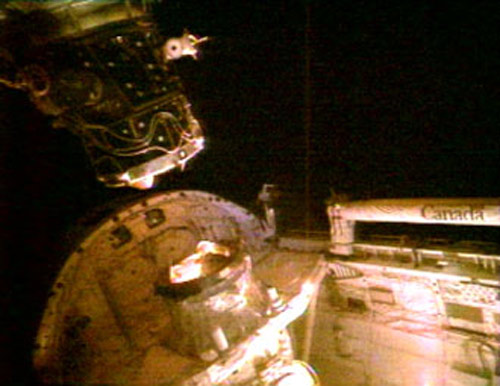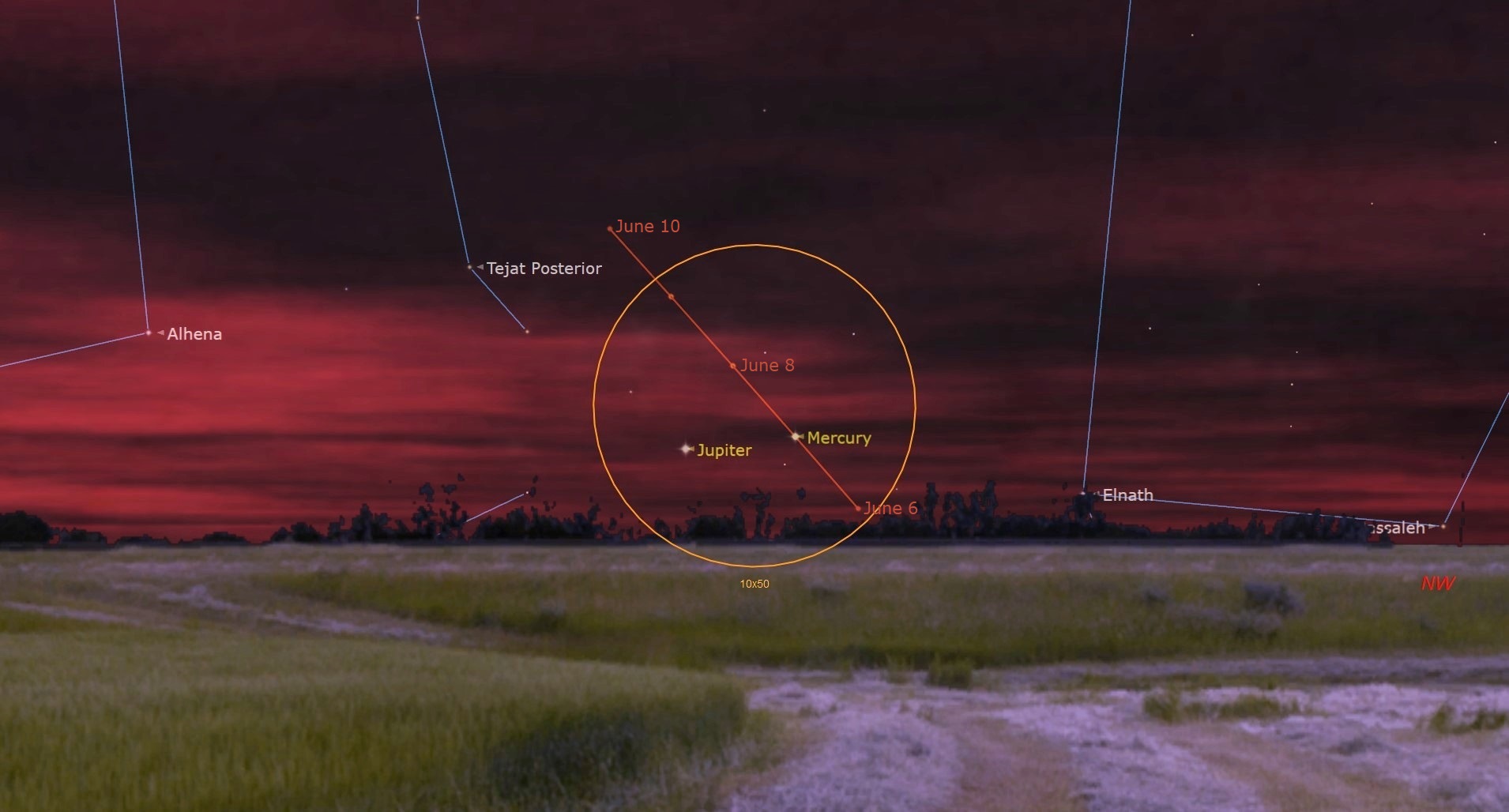Discovery Set for Monday Landing, NASA Flight Director Says

HOUSTON - More than two years after watching over the ill-fated reentry of the space shuttle Columbia, a NASA flight director is once again ready to guide an orbiter toward landing - this time armed with a wealth of orbital inspections and photographs that have proven the spacecraft's integrity.
LeRoy Cain, ascent/entry flight director for NASA's STS-114 mission aboard Discovery, said Sunday that the shuttle is in fine shape and its crew primed to make an early-morning landing Monday at Kennedy Space Center (KSC) in Florida. Discovery's crew is concluding a 13-day mission to the International Space Station (ISS).
"This vehicle is entirely clean with respect to the [thermal protection system], it's in very good shape and we feel very good about it," Cain said during a morning briefing here at Johnson Space Center (JSC). "We're all very excited and anxious."
Cain served as ascent/entry flight director for Columbia's STS-107 flight and is standing watch over Discovery, and said he won't rest easy from the moment five minutes before the shuttle fires its brief de-orbit burn until the spacecraft rolls to a stop on the KSC tarmac.
"That's what I get paid to do, is to worry," Cain said. "We're ready, we've practiced this literally hundreds of times."
Discovery is poised to land at KSC's Shuttle Landing Facility at about 4:45 a.m. EDT (0845 GMT), about an hour after firing its Orbiter Maneuvering System (OMS) engines for a short, three-minute burn, Cain said.
The weather outlook appears good for the landing with a slight chance of rain showers, but Discovery could land at 6:22 a.m. EDT (1022 GMT) if rain threatens the first target, NASA officials added.
Get the Space.com Newsletter
Breaking space news, the latest updates on rocket launches, skywatching events and more!
The orbiter has enough supplies to last through Wednesday, and will target KSC for landing on Monday and Tuesday, then look to additional airstrips at Edwards Air Force Base in California and Northup Strip at White Sands Missile Range in New Mexico.
Discovery is NASA's first shuttle mission since the STS-107 flight aboard Columbia, which broke apart over Texas on Feb. 1, 2003 about 16 minutes before its anticipated landing at KSC. Its seven-astronaut crew did not survive. Investigators later found that a chunk of external tank foam struck Columbia's left wing during launch, critically wounding it for the reentry process.
"I fully expect a lot of anxiety, and a lot of excitement," Cain said of Discovery's Monday landing. "A lot of folks have anticipated this moment for a long time. The mood during the whole mission has been one of great excitement."
Cain and other shuttle officials have lauded Discovery's 13-day mission, which successfully demonstrated that astronauts can inspect their spacecraft for damage in flight, and even repair the orbiter's heat shield if needed.
"We've looked forward to this mission for a long time," Cain said. "We've learned a lot about the vehicle and...in the past couple of years we've learned a lot about ourselves."
During the flight's final spacewalk, STS-114 mission specialist Stephen Robinson stood atop the space station's robotic arm to remove a pair of space-filling strips protruding from the tiles along Discovery's belly.
"We have more capability now than we ever had in the entire program," Cain said. "It improves our confidence...we have more data now, and that was the whole point, a big part of the objective of this mission."
Two high-altitude WB-57 aircraft equipped with nose-mounted telescopes - used to record aerial views of Discovery's launch - will fly in parallel with the shuttle during landing in as part of NASA's WAVE experiment.
But it is Discovery's landing that will herald the mission as a complete success and push NASA's manned spaceflight efforts forward, shuttle officials said.
"I think it will be another milestone," Cain said. "I look at it as a new beginning for us and it's been a great beginning, this flight has been incredible in every way."
- Fixing NASA: Complete Coverage of Space Shuttle Return to Flight
Join our Space Forums to keep talking space on the latest missions, night sky and more! And if you have a news tip, correction or comment, let us know at: community@space.com.

Tariq is the Editor-in-Chief of Space.com and joined the team in 2001, first as an intern and staff writer, and later as an editor. He covers human spaceflight, exploration and space science, as well as skywatching and entertainment. He became Space.com's Managing Editor in 2009 and Editor-in-Chief in 2019. Before joining Space.com, Tariq was a staff reporter for The Los Angeles Times covering education and city beats in La Habra, Fullerton and Huntington Beach. In October 2022, Tariq received the Harry Kolcum Award for excellence in space reporting from the National Space Club Florida Committee. He is also an Eagle Scout (yes, he has the Space Exploration merit badge) and went to Space Camp four times as a kid and a fifth time as an adult. He has journalism degrees from the University of Southern California and New York University. You can find Tariq at Space.com and as the co-host to the This Week In Space podcast with space historian Rod Pyle on the TWiT network. To see his latest project, you can follow Tariq on Twitter @tariqjmalik.
